Healthy Lighting By JC Scott
Report on research into the area of natural light and its interaction on the human brain & body
Appropriate exposure to natural light has positive effects on our circadian rhythm and in turn promotes many aspects of our health. If you stay in touch with natural light you will have benefits for your own natural biological rhythm. This reports shows some hows and some important whys natural light effects our health.
We evolved from exposure to natural day lighting. The sun provides a specific wavelength (blue range) in the early morning that lasts until early afternoon. At that point a different light wavelength is produced (red to orange range). It was recently discovered that the retina has a specific photoreceptor that detects light and sends it to a special part of the brain known as the suprachiasm, located near the hypothalamus. Once the suprachiasm is triggered, it sets off the hypothalamus, the master gland that in turn triggers the pituitary, thyroid, and adrenal glands of the brain and body. The hormonal reaction to light is what causes and promotes the diverse actions of the body and health.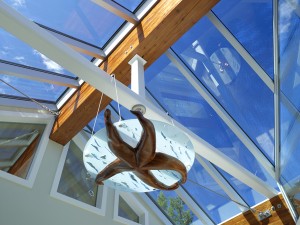
The circadian rhythm (means approximately a day) is critically important to our health because it has effects on our immune system, our ability to fight off disease, hunger and obesity, blood pressure, and cognition. It controls our sleep wake cycle which is so important for brain function and body regulation.
The suprachiasmatic nucleus or nuclei, abbreviated SCN, is a tiny region, on the brain’s mid line, situated directly above the optic chiasm. It is responsible for controlling our circadian rhythms. The neuronal and hormonal activities it generates regulate many different body functions in a 24-hour cycle, using around 20,000 neurons. The SCN, which is pine cone-shaped and the size of a grain of rice, interacts with many other regions of the brain. It contains several cell types and several different peptides including d and neurotransmitters.
The blue range of light helps our bodies become aroused, alert, attentive and focused. As the day proceeds and we enter the afternoon when the blue range of light shifts to the red/orange range our bodies begin the process of slowing and ultimately sleeping. Our body slows in blood pressure and we enter the four stages of sleep including deep sleep. Melatonin is produced and growth hormones are triggered. Total black darkness is best for sleep cycles, even pinpoints of blue light like the LED’s on electrical devices can effect melatonin and disrupt healthy sleep.
Today there are design lighting systems that help to promote exposure to natural light, to help set the circadian rhythm, and to promote human performance in the workplace and school. Swiss buildings include circadian computer lighting control bringing light levels up and down in sync with the natural day. Studies support increased school performance by students, and reduced agitation and increased sleep for older adults who reside or study in environments with natural day lighting systems. Natural lighting via design lighting systems help older adults residing in assisted living or long-term care facilities. This is because older adults experience changes in their sleep wake cycles and this gets exacerbated with dementia and Alzheimer’s disease.
Using as much natural light in buildings as possible has many advantages over using artificial lights, if its penetration is appropriately controlled, Assistant Professor Marilyne Andersen of the MIT Department of Architecture told her audience for a Building Technology Lecture Series talk. “Light is not only an amount of energy,” Andersen said. “It also provides us with the means to reveal spaces and volumes and interact with our environment.”
Andersen and others have been working on how to better incorporate natural light into building design. Their research takes into consideration the many positive effects of natural light, including the considerable financial savings in energy bills and the overall effects natural light has on well-being, as well as the challenges natural light presents.
Andersen cited studies in which natural light seemed to improve productivity in the workplace, with further study needed to isolate the effects of daylight. She also spoke of its significant health benefits in terms of regulating human circadian rhythms, for instance. Although the studies are still at an early stage, Andersen did say that researchers know that natural light is “part of our biological needs. Intuitively, we prefer daylight to electric light,” she said.
In a typical building, lighting accounts for 25-40 percent of energy consumption. By allowing more natural light to penetrate and controlling both its light and heat components, the financial savings could be considerable. In addition to its health and financial benefits, natural light also provides an almost “perfect white light” that has a number of visual benefits. Best of all, natural light is “of course, plentiful,” Andersen said during her hour-long talk.
Natural light is not without its issues. These include glare, overheating, variability and privacy issues, since transparent materials must be used. Andersen and her students have been working on ways to increase the positive aspects of using natural light in buildings, while also decreasing the negative.
Addressing glare means keeping sunlight out of the field of view of building occupants while protecting them from disturbing reflections. Addressing overheating means adding appropriate exterior shading, filtering incoming solar radiation or even using passive control means such as thermal mass. Furthermore, addressing the variability and privacy issues requires creative ways to block or alter light patterns and compensate with other light sources.
There is a lot to consider so designers have to find new and innovative ways to simulate the effects of natural light on those who will occupy their buildings.
At MIT for example, there are a number of ways designers may assess the lighting in their building designs. Among these methods are heliodons (for sun track studies) which simulate the course of the sun and use cameras to measure the effects of sunlight inside a building model during different times of both the day and year. With these results, building designers are better able to judge their model’s adequacy to manage solar penetration and issues such as shadows and sunlight obstructions and high contrasts. This is becoming an ever more important part of design for all building designers.
The MIT LightSolve Project when complete will allow designers to really explore and synthesize information that would cover the entire year of light, so truly informed decisions can be made about the most appropriate design, also accounting for climate and the location of the building. The MIT HelioDome Project proposes a more time-efficient measurement procedure by relying on calibrated digital cameras as light- or heat-meters, thus addressing both visual and thermal concerns.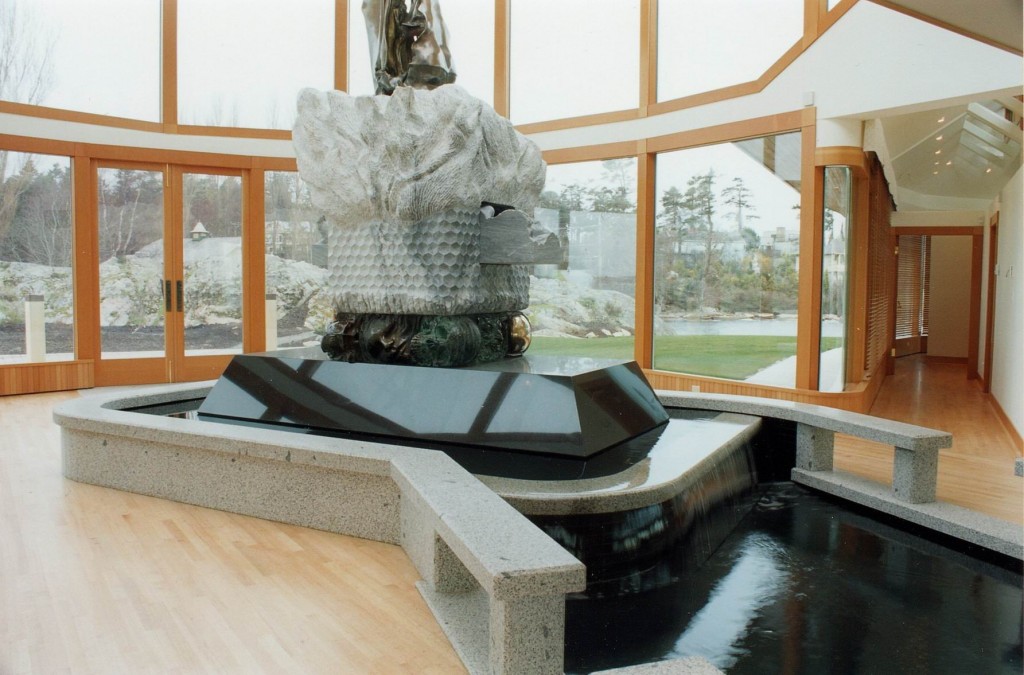
These projects, in combination with collaborations outside of MIT with Harvard Medical School and research institutes in California, Canada and Europe, will also lead to new ways of assessing daylight and will promote a new generation of metrics including climate concerns and health issues, which will hopefully be integrated into codes standards and, hence, into new constructions or building renovations, Andersen said. MIT Tech Talk on Nov 8, 2006.
Organic LED Lighting – model next generation lighting
OLEDs (Organic Light Emitting Diodes) are solid-state devices composed of thin films of organic molecules (carbon based) that create light with the application of electricity. These lights sources are like glowing heavy paper. They have a greatly reduced environmental impact & lower recycling costs (as they utilize no heavy metals). Regular LED’s for example contain arsenic and heavy metals. OLED’s are energy efficient compared to the incandescent bulb which requires a lot of heat to produce light on the filament. This heat from incandescent bulbs is considered wasted energy by many green advocates (but actually may be all the heat we need in other situations) thus using OLED’s reduces or eliminates the energy waste often attributed to regular incandescent bulbs. WAC Lighting manufactures and sells OLED’s.
The WAC manufacturing campus actually utilizes daylight harvesting techniques for lighting offices, which are also wired for photovoltaic power. Electricity is not yet a completely renewable resource but hopefully it will be within our lifetime. Organic Light Emitting Diodes OLED’s may promote both improved lighting and energy efficiency; and energy efficiency is any solution that will reduce the amount of energy necessary to maintain our standard of living.
Circadian Rhythm
Numerous organisms maintain inherent individual daily rhythms to their biological processes, known as circadian rhythms, that assist the organism in maintaining functional periodicity relative to the 24-hour day / night cycle of the earth. These rhythms are maintained by the individual organisms, but due to variable individuality and environmental pressures, these rhythms must continually or repeatedly be reset to synch with the natural environmental cycle.
In order for this to be accomplished, external factors must play some role in the synchronization of the internal circadian rhythm with the external environment. Of the various factors that influence this process, light exposure to the eyes is the strongest effector. Light sets and then resets the synchronization of our biological clock. Studies have shown that the timing of exposure to light influences synchronization. In diurnal species, exposure to bright light after wakening advances the circadian rhythm, whereas exposure before sleeping delays the rhythm.
The length of exposure influences the process and longer exposures have a greater effect than shorter exposures. and consistent exposure has a greater effect than intermittent exposure. In rats, constant exposure to bright light eventually disrupts the cycle to the point that functions like memory and stress coping may be impaired. It is this disruption that US forces use to dislocate inmates at Guantanamo.
SAD (Seasonal Affective Disorder)
Seasonal Affective Disorder (SAD), also known as seasonal depression, is a mood disorder in which people who have normal mental health throughout most of the year experience depressive symptoms in the winter year after year. SAD was formally described and named in 1984. Although experts were initially skeptical, this condition is now recognized as a common disorder, with its prevalence in the North America ranging from as low 1.4 percent in South Florida to 10 percent and higher in the north. SAD is measurably present at latitudes in the Arctic region, such as Finland and Alaska. Cloud cover may also contribute to the negative effects of SAD which is why it is a concern during the winter in coastal BC.
Some people experience a serious mood change when the seasons change. Symptoms of SAD may consist of difficulty waking up in the morning, tendency to oversleep and over eat, especially a craving for carbohydrates, which leads to weight gain. Other symptoms include a lack of energy, difficulty concentrating on or completing tasks, and withdrawal from friends, family, and social activities and decreased sex drive. They may sleep too much, have little energy, and may also feel depressed. Though symptoms can be severe, they usually clear up. Mutation of a gene expressing melanopsin has been implicated in the risk of having Seasonal Affective Disorder.
There are many different treatments for classic (winter-based) seasonal affective disorder, including light therapy with sunlight or bright lights, antidepressant medication, behavioral therapy, and carefully timed supplementation of the hormone melatonin. The most effective and safest therapy however is walking outdoors, even in the winter which has been tested to be equal to the most effective clinical treatments.
SAD may be caused by a lack of serotonin, because mice incapable of turning serotonin into N-acetylserotonin express “depression-like” behavior. Another theory is that the cause may be related to melatonin which is produced in dim light and darkness by the pineal gland, since there are direct connections, via the rice sized SCN (suprachiasmatic nucleus), between the retina and the pineal gland.
Subsyndromal Seasonal Affective Disorder is a milder form of SAD experienced by an estimated 14.3% (vs. 6.1% SAD) of the North American population. The blue feeling experienced by both SAD and SSAD sufferers can usually be dampened or extinguished by exercise and increased outdoor activity, particularly on sunny days, resulting in increased solar exposure. Ever wonder why so many of us particularly as we get older want to head to Mexico and Hawaii every winter? Connections between human mood, as well as energy levels, and the seasons are well documented, even in healthy individuals.
Light therapy may be an effective treatment for SAD. Light therapy uses a lightbox which emits far more lumens than a customary incandescent lamp. Bright white “full spectrum” light at 10,000 lux, blue light at a wavelength of 480 nm at 2,500 lux is preferred. Bright light therapy is effective when sitting a prescribed distance, commonly 30–60 cm, in front of the box with eyes open but not staring at the light source for 30–60 minutes. Bright light therapy, or phototherapy, has been used for over 20 years to treat SAD with numerous studies citing its effectiveness. Light therapy is recommended as a first-line treatment for SAD in Canadian, American, and international clinical guidelines. The mood of individuals with SAD can improve with as little as 20 minutes of bright light exposure. Bright light is more effective than dim light in protecting against “mood lowering” which commonly occurs in SAD. Discovering the best schedule is essential. One study has shown that over two thirds of users find lightbox treatment inconvenient and as many as one in five stop use because of this.
We are not only receptive to light with our eyes, in fact we have photoreceptor in our skin. A study from a company in Finland has shown that bright light therapy delivered directly to photosensitive regions of the brain via the ear canal may also be an effective alternative to light box treatment. In studies without control groups 92% of SAD sufferers experienced total relief from their symptoms when receiving bright light treatment in this unusual way through their ears directly to the brain!
Dawn simulation has also proven to be effective; in some studies, there is an 83% better response when compared to other bright light therapy. Patients using light therapy can experience improvement during the first week, but increased results are evident when continued throughout several weeks. Most studies have found it effective without use year round but rather as a seasonal treatment lasting for several weeks until frequent light exposure is naturally obtained.
Light therapy can also consist of exposure to sunlight, either by spending more time outside or using a computer-controlled heliostat to reflect sunlight into the windows of a home or office.
Outdoor therapy is an intervention that is recommended. Outdoor work has been used effectively as a therapy to treat those with mood difficulties during the winter season in Denmark. As an example, horticulture groups have shown positive impacts on depressive symptoms, which can be associated with psychosocial adaptation leading to healthy occupational performance. Similarly, outdoor walking can provide a “therapeutic effect” to individuals with SAD that is on par with light therapy.
Light Colour & Temperature
The Colour Rendering Index (CRI) is a quantitative measure of the ability of a light source to reproduce the colours of various objects faithfully in comparison with an ideal or natural light source. Light sources with a high CRI are desirable in colour-critical applications such as photography and cinematography.
Colour Temperature is a characteristic of visible light that has important applications in lighting, photography, videography, publishing, manufacturing, astrophysics, horticulture, and other fields. Colour temperature is conventionally stated in the unit of absolute temperature, the Kelvin, having the unit symbol K.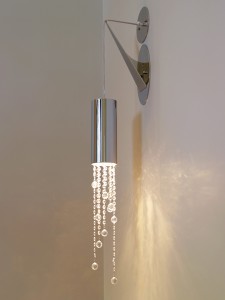
Colour temperatures over 5,000K are called cool colours (blueish white), while lower color temperatures (2,700–3,000 K) are called warm colours (yellowish white through red).
Light Pipe
Dark warehouses and commercial office buildings are ideal for light tubes or ‘tubular skylights’, such as DayTube or LightPipe. These commercial models will transform any dark, damp warehouse into an inviting, sun-filled environment by harnessing the sun’s power. Adding the sun’s natural light to the workplace has been proven to be a healthier alternative to fluorescent or incandescent lighting, creating a significantly better working environment by lifting the overall mood of employees, and thereby, increasing productivity. Additionally, installing tubular skylights will greatly decrease the need for electrical lighting, resulting in energy savings and lower electric bills.
“Day-lighting is the strongest contributor to sustainability in Green Buildings.” John Picard, Clean Tech Evangelist
The LEED building certification process strongly encourages the use of Day-lighting, not only for the energy savings generated by reduced electrical light use, but also for the human factor – improvements to the health and well-being of the occupants, be they residents, students, patients, and workforce or customer base. It is now well recognized that the controlled admission of natural light into a building’s interior spaces creates a stimulating and productive environment for building occupants.
Why Daylight?
To create beautiful spaces, save energy and operating costs and reduce our impact on our planet. Daylight works because people thrive in naturally lit environments. Studies (as well as our own common sense) show that shoppers linger longer and buy more; students do better on tests; office workers are more productive and absent less often. And that’s not all. Day-lighting can also:
- Reduce lighting costs
- Reduce cooling costs (in almost all climates almost year round)
- Be accomplished without increasing construction costs (in new construction)
It’s just smart, because day-lit buildings are cool, temperature wise and aesthetically. Day-lit buildings also make a statement about their owners and occupants showing that they are socially and fiscally responsible. Whether you are seeking a signature piece of architecture or simply trying to meet a budget, day-lighting is a key design strategy.
Cool day-lighting (or cooling load avoidance day-lighting) is not a new term. It is a descriptive term to differentiate day-lighting design that takes into consideration whole building energy impacts of integrated day-lighting design from designs that do not do this. Cool day-lighting was most recently popularized by Steve Teorney of LIGHTFORMS working in cooperation with the Energy Center of Wisconsin and the Day-lighting Collaborative to provide training on the day-lighting approach that LIGHTFORMS used on its projects around the country.
Cool daylighting is truly a whole building approach to daylighting that looks to not only reduce electric lighting needs but to reduce (or at a minimum not increase) cooling loads within the daylit building. The cooling load is primarily a function of internal heat gain from lights, equipment, people and sunlight. Daylighting reduces the need for electric lighting and consequently the amount of heat produced by electric lights. When incorporating high performance glazing and exterior shading recommended for a comprehensive cool daylighting design, it also minimizes heat gain from the sun through the envelope. These overall reduced loads often result in a reduction in the size of the cooling system.
Another key issue associated with cool daylighting design approach forwarded by LIGHTFORMS is the use of balanced luminance ratios. Again, not a new concept, but a key part of the design parameters for achieving a cool daylighting design that uses low transmittance glass, exterior shading and strategic glass placement to achieve cool, glare free daylighting.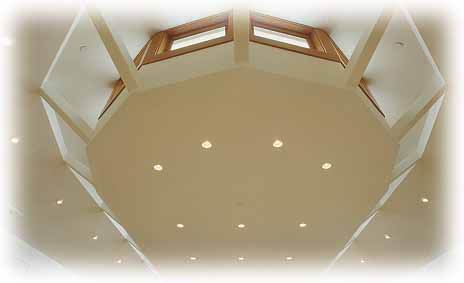
It’s only natural.
Daylighting taps into the five-billion-year-old fusion reactor called the sun. Using natural light from the sun costs nothing to the environment but pays big dividends to building occupants. The result is a compelling, efficient lighting solution that also protects the environment. By consuming less energy, daylit buildings reduce fossil fuel use and carbon dioxide emissions associated with global warming and climate change.
Conclusion
So by taking our own health as a starting point, we end up learning through research that being outdoors and even indoors with natural light and natural rhythms is the best thing we can do, not only for ourselves, but also for the planet. A good combination!

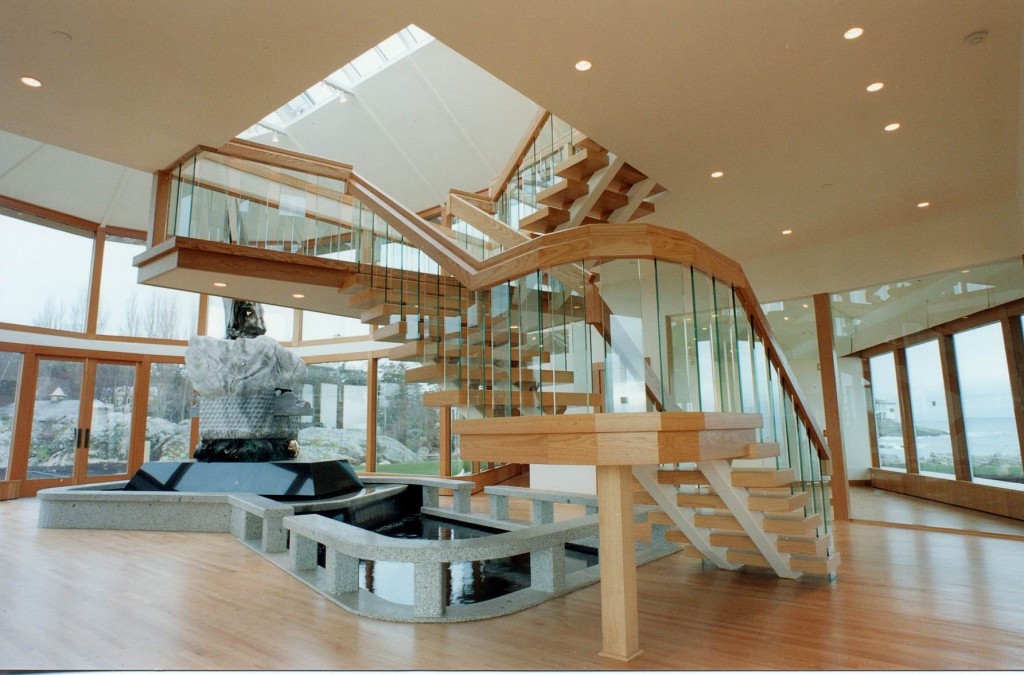


Leave a Reply
Want to join the discussion?Feel free to contribute!